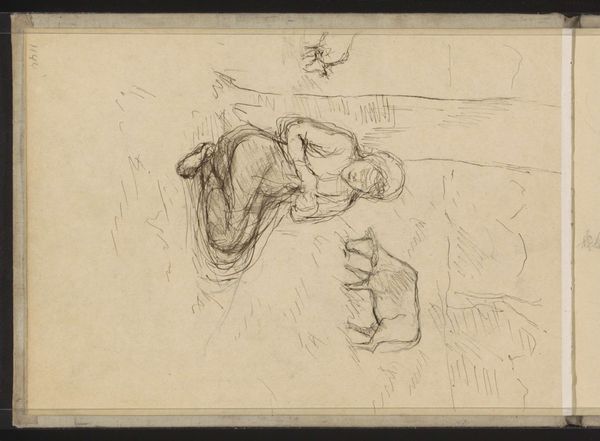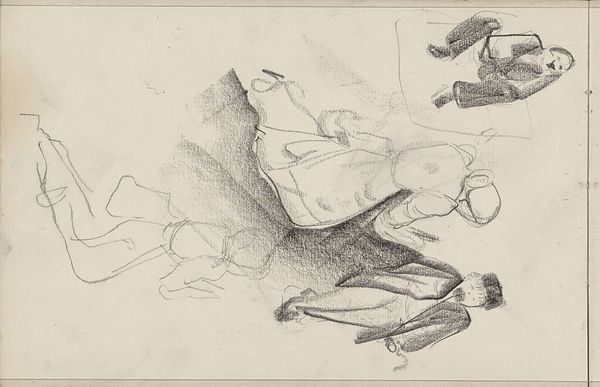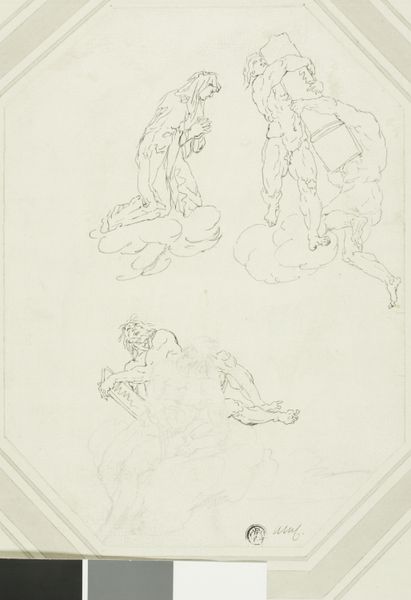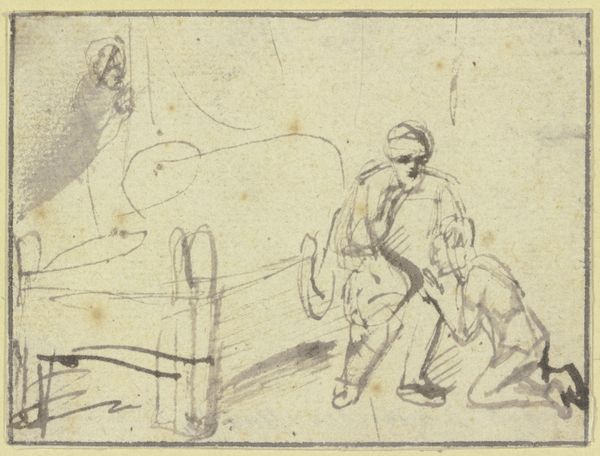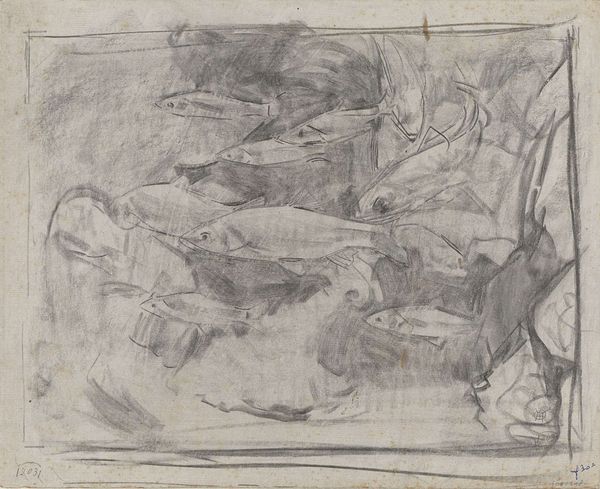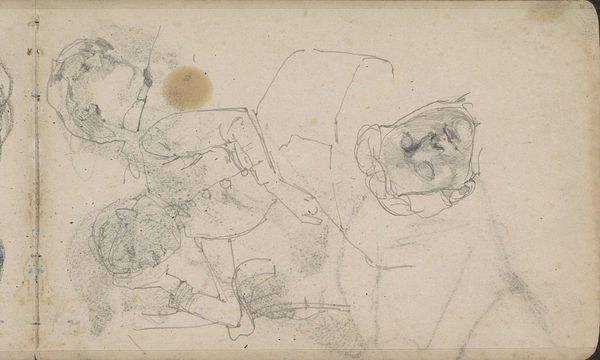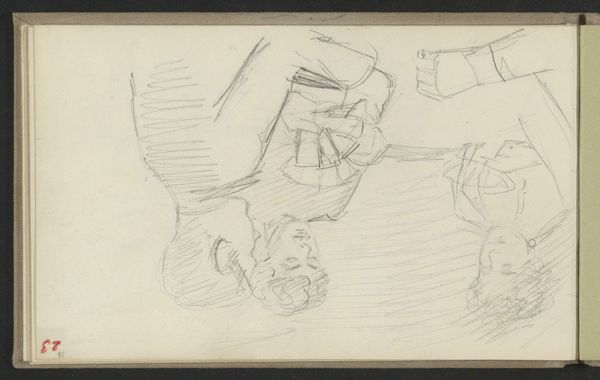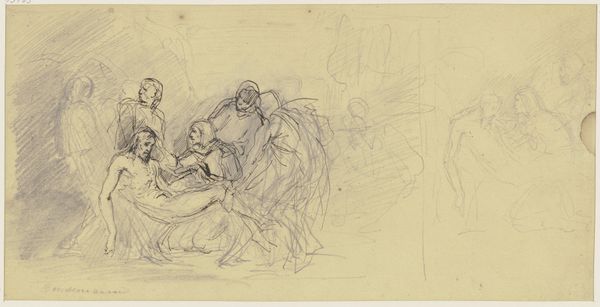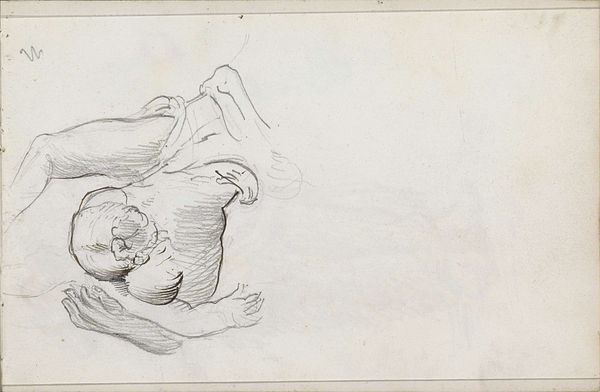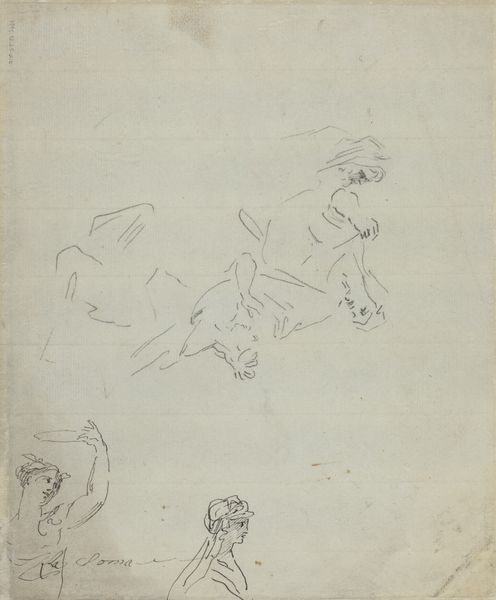
drawing, pencil
#
drawing
#
narrative-art
#
pencil sketch
#
figuration
#
sketchwork
#
romanticism
#
pencil
#
history-painting
Dimensions: height 244 mm, width 338 mm
Copyright: Rijks Museum: Open Domain
Eugène Delacroix made this drawing, Hercules boeit Nereus, using graphite. This sketch depicts a scene from Greek mythology, Hercules wrestling with the sea god Nereus. The subject matter evokes the Romantic era's fascination with classical antiquity. Delacroix, working in 19th-century France, was part of a generation that saw art as a means of expressing intense emotions. It's easy to see this drawing as a powerful statement on the role of heroes and the relationship between man and nature, but it’s equally worth asking, "What kind of cultural institutions enabled a work like this?" It helps to remember that Delacroix was also deeply involved in the official art world of his time. His commissions from the French state and the art market helped shape his career. Examining Delacroix's drawing makes it clear that the meaning of art is always tied to a specific social and institutional context. To fully understand it, we need to consider not just the artwork itself, but also the world in which it was created and displayed.
Comments
No comments
Be the first to comment and join the conversation on the ultimate creative platform.
